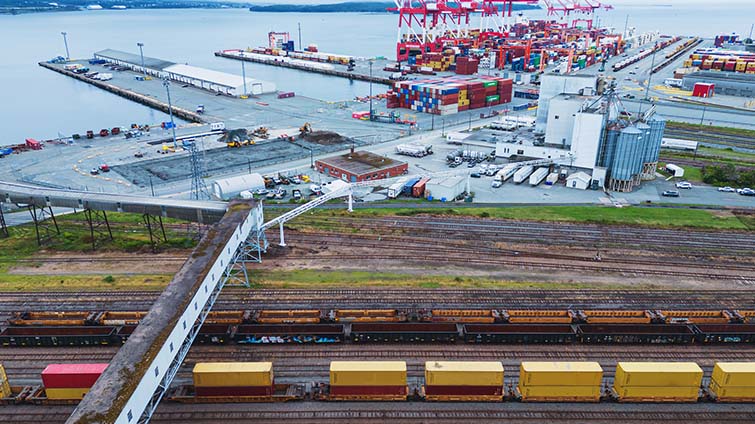Tariffs continue to influence imports

After U.S. retail chains faced 145% tariffs on Chinese-made goods in April, a new dilemma emerged in May when the tariffs were lowered for 90 days. As Noah Hoffman, C.H. Robinson vice president for retail logistics, put it in a CNBC story: “What’s the bigger gamble during this 90-day window? Pulling holiday inventory forward while ocean rates are up and demand signals are uncertain, or waiting too long and risking that tariffs go up again? That’s the conversation a number of retailers and retail suppliers are having with us right now.”
How shippers are navigating tariffs
Earlier in the year, some of our 7,500 retail customers were able to frontload inventory if they had enough capital to stock up, factories with capacity at the time, and storage once the inventory arrived in the United States.
But many small-to-medium businesses were unable to pull freight forward in anticipation of higher tariffs and even recalled freight that was at or on its way to port when the higher tariffs hit. Their pre-tariff inventory may be dwindling now, while retail suppliers of all sizes need to make decisions about their strategy for holiday merchandise.
Cargo that was held at origin in April and could get a booking quickly when the tariffs were lowered is expected to start hitting U.S. West Coast ports in June. The flow of new orders from China depends on how fast ocean carriers are able to reposition ships that had been moved to other trade lanes.
Complicating matters for some retail suppliers are the higher U.S. steel and aluminum tariffs that went into effect June 4. For products that include steel and aluminum, such as furniture and sporting equipment, the tariffs have been raised from 25% to 50%. For further details, including changes for goods brought into Foreign Trade Zones and how tariffs are stacked, see the Customs section of this report.
What to expect at ports and beyond this summer
Ocean shipping demand from China is steadily increasing week by week, and carriers are already booking three to four weeks out. This influx raises the possibility of freight-bunching and congestion at U.S. West Coast ports. If demand continues into July at an elevated pace, port congestion could begin to build in July and August.
Downstream impacts on U.S. trucking capacity may be masked by the higher volume of freight that is typical during the overlap of produce season and beverage season—when retailers are bringing in more water, soda, and beer for summer.
Year-end holiday planning
From a planning, procurement, and shipping perspective, there’s still time to get merchandise in from China for the Halloween and Thanksgiving holidays. Ideal timing for Christmas imports needs to be carefully considered. Retail suppliers should take into account three major factors: Consumer demand is muted, ocean shipping rates are elevated, and tariffs are as volatile as ever.
A positive sign is that U.S. consumer sentiment rose in late May to 52.2, according to the University of Michigan. That was an improvement from a reading of 50.8 earlier in the month – one of the lowest readings on record.
Court ruling on some tariffs under appeal
A court ruled May 28, 2025, that the U.S. president cannot impose tariffs by declaring a national emergency. This ruling applied to the 10% reciprocal tariffs the United States placed on imports from around the world as well as U.S. tariffs related to drug trafficking that were imposed on goods made in China, Canada, and Mexico.
But a federal appeals court quickly stayed the decision, and the tariffs remain in effect while the appeals process unfolds. Arguments are due to the court by June 9, 2025. C.H. Robinson will provide updates as they become available. If you haven’t already done so, sign up to receive our client advisories.